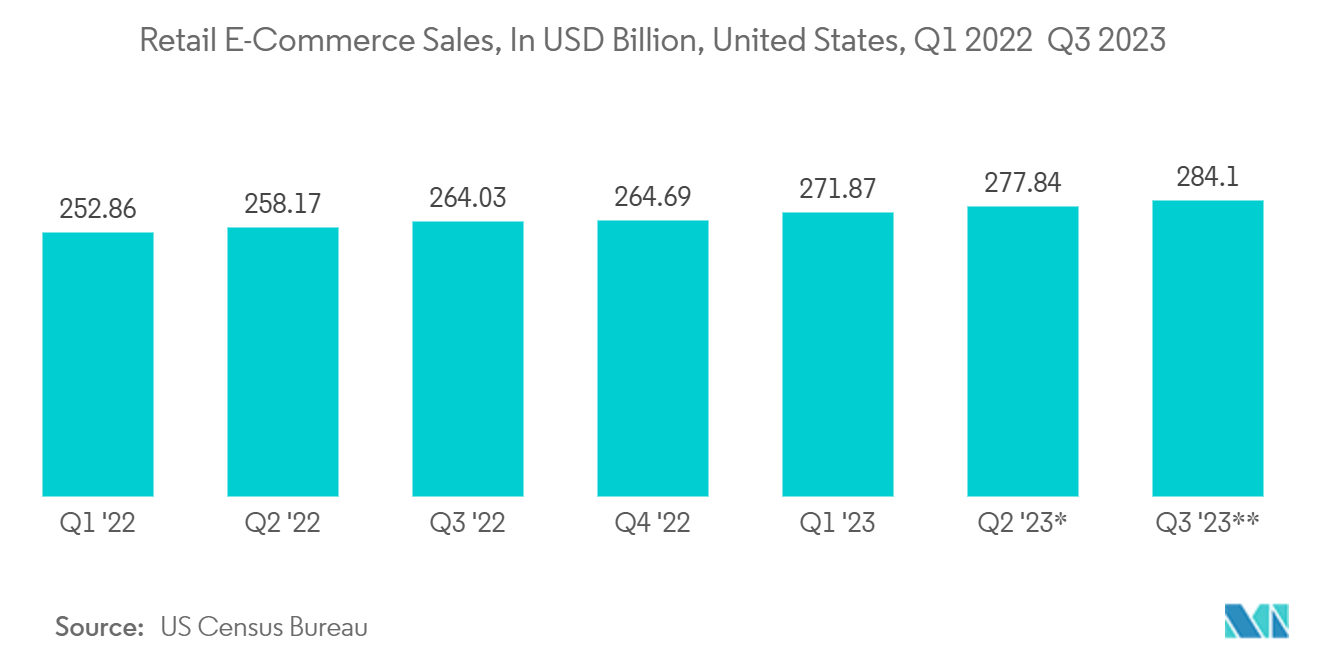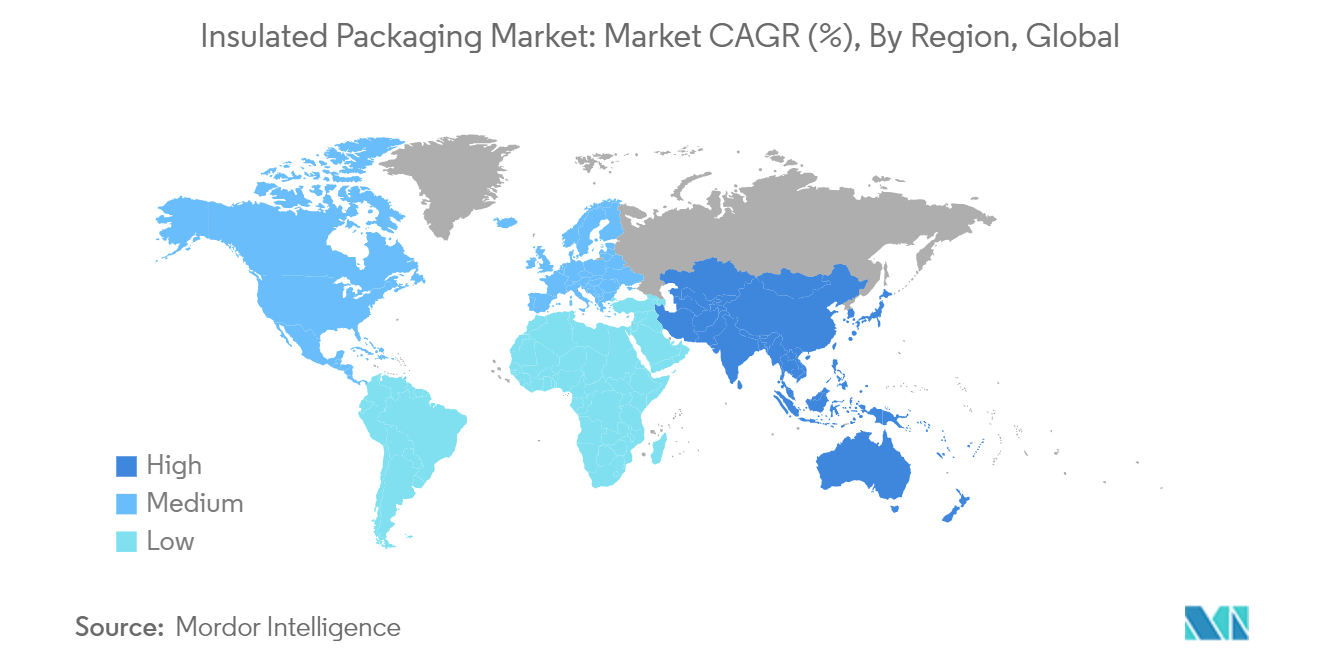Market Trends of Insulated Packaging Industry
Plastic Segment to Show Significant Growth
- The rise of e-commerce has increased the demand for perishables and the need to maintain their freshness. In developed nations, plastic packaging innovation continues within a relatively mature market where established players have defined clear industry standards.
- The e-commerce industry, particularly companies adopting Amazon-like single-day delivery models for low-cost items, has been a key driver of this trend. Growing investments in grocery start-ups and increased cash flow from Asian economies for direct-to-consumer pharmacy deliveries are expected to influence plastic packaging formats.
- Invest India reported that the Indian online grocery retail industry witnessed a CAGR of over 50% from 2020 to 2025. It was valued at USD 2 billion to USD 3 billion in 2020 and is projected to grow from USD 10 billion to USD 12 billion by 2025. This growth is largely attributed to increasing internet and smartphone penetration. India's total internet user base was expected to grow from 636.73 million in 2019 to 829 million in 2021, intensifying pressure on supply chain activities.
- As parcel-sized packages dominate direct-to-consumer orders, traditional parcel carriers like FedEx, UPS, and USPS, which typically do not offer refrigerated services, handle most shipments. This shift has increased demand for secondary packaging with insulating features.
- The US Census Bureau reported that the United States retail e-commerce sales reached USD 284.1 billion from July to September 2023, showing an increase from the previous quarter. This growth in online retail sales correlates with a higher demand for efficient and secure shipping solutions. Insulated packaging, designed to protect products from temperature variations during transit, has become crucial for safely delivering temperature-sensitive goods such as perishables and pharmaceuticals.

Asia Pacific to Register Major Growth
- The Chinese insulated packaging market is driven by the country's thriving pharmaceutical, food, and beverage industries, which have a high demand for temperature-controlled packaging solutions. The region is emerging as a lucrative market for insulated packaging due to expanding industrial networks, improved economic conditions, changing consumer lifestyles, and a growing population.
- This fuels the demand for products like food, cosmetics, and other items that require insulated packaging. The region's expanding manufacturing industry is an additional factor contributing to China's strong market position.
- Japan is a significant player in the global e-commerce industry, with its online retail market expanding rapidly. According to data from Agriculture and Agri-Food Canada, Japan ranks third globally in the e-commerce market size, behind China and the United States.
- The World Bank's "Doing Business" report places Japan 29th out of the top 30 nations in terms of ease of doing business. The Japanese market for insulated packaging is expected to grow in the coming years, driven by increasing consumer demand for temperature-sensitive goods, expanding e-commerce sales, and growing environmental sustainability concerns.
- India's rapidly expanding food processing industry is creating a greater need for effective packaging solutions to maintain the quality and freshness of food items. Insulated packaging helps preserve the quality and temperature of food products during storage and transportation, reducing the risk of spoilage and waste. According to Invest India, India's food processing industry is one of the world's largest, with output projected to reach USD 535 billion by 2025-26.
- According to Bikaji, in 2022, the estimated market value of packaged food was over USD 51.35 billion in India. This was an increase as compared to the previous year. The market value of packaged food is likely to increase to more than USD 70.22 billion in 2026.
- As the packaged food market grows, there is a higher demand for effective packaging solutions. Insulated packaging is crucial for maintaining the quality, safety, and freshness of food products, especially for items requiring temperature control, such as perishable goods and beverages.


